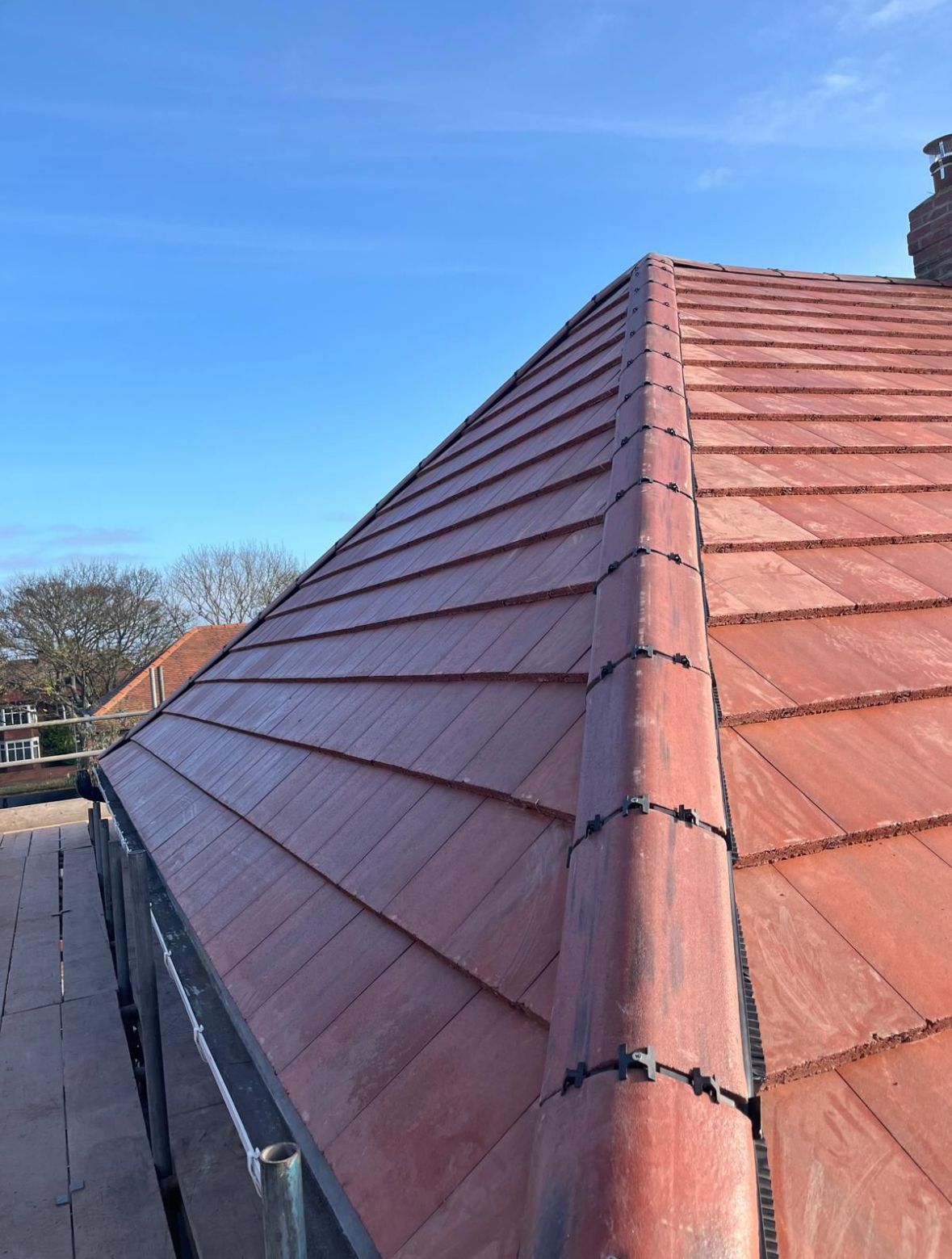Choose A. Armstrong Roofing
- 49 Years of Trusted Roofing Expertise Across the North-East
- Enjoy Year-Round Competitive Pricing: Get 40% Off New Roofs This Winter!
- NFRC + CompetentRoofer Certified
For a free quote, call us or simply fill in the form below!
Choose A. Armstrong Roofing
- 49 Years of Trusted Roofing Expertise Across the North-East
- Enjoy Year-Round Competitive Pricing: Get 40% Off New Roofs This Winter!
- NFRC + CompetentRoofer Certified
For a free quote, call us or simply fill in the form below!
Protect Your Home from Storm Damage: What to Check After Storm Éowyn Hits the North East
Homeowners must prepare as Storm Éowyn approaches, with amber warnings for severe winds being expected across the North-East of England this Friday.

Severe storms can cause significant damage to your roof, and taking prompt action can help prevent further issues.
At A. Armstrong Roofing, we specialise in storm damage repairs, and we’re here to guide you through the process of checking your roof after the storm has passed, as well as explaining how we can help with insurance claims.
We understand that dealing with storm damage can be stressful, which is why we aim to make the repair process as smooth as possible. For our customers, we take the hassle out of insurance claims by covering the excess on insurance jobs.
The excess is deducted from the final bill, leaving you with fewer costs to worry about.
Why It's Important to Check Your Roof After a Storm
Once the storm has passed, it’s crucial to check your roof for any signs of damage. High winds, heavy rain, and debris can wreak havoc on your roof, and addressing issues early can prevent more expensive repairs down the line.
Here’s how you can effectively carry out a roof inspection:
- Visual Check from the Ground
Begin by inspecting your roof from the ground. Look for any obvious signs of damage such as missing tiles, cracked or dislodged ridges, or fallen debris. This will give you a good starting point to identify where issues might have occurred. - Use Photos for Documentation
If you spot any potential problems, take clear photos from various angles. This will help you document the damage for your insurance claim, and can also assist roofing professionals in assessing the severity of the damage when they arrive. - Get a Professional Roof Inspection
While a visual check from the ground can help, it’s always best to hire a professional to thoroughly inspect your roof. A roofing expert will be able to spot issues that may not be visible to the untrained eye, ensuring that no damage goes unnoticed.
What Parts of Your Roof Are Most at Risk During a Storm?

After a storm like Éowyn, certain parts of your roof are more likely to be affected. Here’s what to look out for:
- Ridge Tiles
The ridges of your roof are most vulnerable during strong winds. These tiles are at the highest point and are often fixed less securely than other tiles, making them prone to being lifted or blown off. It’s important to check if any ridge tiles have become loose or fallen, as this can lead to water damage. - Verge Tiles
Verge tiles, which are the tiles at the edges of your roof, can also be at risk. These tiles help protect the roof from wind and rain, and when they’re displaced, they can leave gaps that allow water to enter. - Lead Flashing
Lead flashing around chimneys, valleys, or roof joints is another common area to check. Strong winds can lift or dislodge lead flashing, allowing rainwater to seep under the roof and potentially cause leaks inside your home.
- Roof Tiles
Strong winds can also loosen or crack general roof tiles. While these are less likely to be blown off entirely, damaged or loose tiles can still lead to leaks and other issues.
Additional Areas That Can Be Affected by Storms
Beyond the roof itself, other parts of your home can suffer from storm damage that could result in internal leaks or further complications:
- Guttering and Rainwater Systems
High winds and debris can cause gutters to become blocked, detached, or damaged. If your guttering isn’t functioning properly, rainwater may not be directed away from your roof, potentially leading to water pooling around the edges of your home and causing leaks inside.
- Chimney Pots and Stacks
Chimney pots and stacks can be vulnerable to high winds, especially if they’re older or not well-secured. If these are damaged or dislodged, it can lead to significant issues, such as leaks or even the risk of a chimney stack collapsing.
- Flat Roof Lifting
If your property has a flat roof, strong winds can sometimes cause the roof to lift or detach. This is particularly dangerous as it can leave large areas of your roof exposed to the elements, increasing the risk of leaks and further structural damage.

When to Call in the Experts
If you notice any of the above issues, it’s important to contact a professional roofing company like A. Armstrong Roofing as soon as possible. While some damage can be minor, others—such as displaced ridge tiles, guttering issues, or a lifted flat roof—can quickly escalate if left untreated.
At A. Armstrong Roofing, we provide comprehensive storm damage repairs for homes across the North East. From roof inspections to full repairs, we offer a fast, professional service to ensure your roof is back in top condition. We also handle insurance work, helping to take the stress out of the claims process by covering the excess and working directly with your insurance company.
Stay Safe and Be Prepared
As Storm Éowyn makes its way through the North East, it’s essential to take precautions and check your roof for damage. A visual inspection, paired with professional help, can keep your home safe from the damaging effects of storm-related leaks. If you’re unsure about the condition of your roof, don’t hesitate to get in touch with A. Armstrong Roofing for a thorough inspection and repair service.
Interested in our services? We’re here to help!
We want to know your needs exactly so that we can provide the perfect solution. Let us know what you want and we’ll do our best to help.






